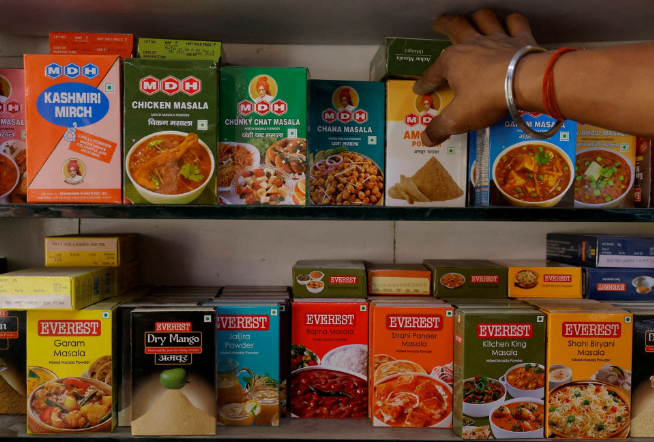Global Concerns Rise Over Indian Spice Contamination: Investigations and Implications (GS Paper 3, Environmental pollution and degradation)

Introduction:
- A wave of concern has swept across international borders as at least five countries, including Singapore, Hong Kong, and the United States, launch investigations into the possible contamination of spice mixes originating from India.
- Brands such as MDH and Everest have come under scrutiny following complaints citing the presence of ethylene oxide (EtO), a toxic chemical used as a food stabilizer, beyond permissible limits.
- The unfolding saga has triggered a flurry of responses from regulatory bodies, exporters, and advocacy groups, raising questions about food safety standards and the integrity of the global spice trade.
The Allegations and Investigations:
- The alarm bells first rang on April 5 when Hong Kong's Centre for Food Safety suspended the sale of select MDH and Everest spice blends due to elevated levels of ethylene oxide.
- Subsequently, Singapore ordered a recall of Everest spice mixes, citing concerns over consumer safety.
- These actions have prompted investigations by regulatory bodies in multiple countries, including the United States, Maldives, New Zealand, Bangladesh, and Australia, heightening scrutiny on the Indian spice industry.
Responses from Indian Authorities and Spice Companies:
- In response to the allegations, the Spices Board of India has initiated mandatory testing of products destined for international markets and is collaborating with exporters to identify the root cause of contamination.
- Meanwhile, both MDH and Everest have vehemently denied the accusations, asserting that they do not use ethylene oxide in any stage of their production process.
- The lack of corroborating evidence from Indian regulatory bodies has further fueled speculation and skepticism surrounding the issue.
-
Health Concerns and Past Incidents:
- Ethylene oxide, a prohibited pesticide, poses serious health risks when present in food products beyond permissible limits.
- Its improper use can lead to the formation of toxic and potentially carcinogenic compounds, raising concerns about long-term health effects.
- This is not the first time Indian spice exports have come under scrutiny.
- Past incidents, including recalls of MDH and Everest products due to salmonella contamination, highlight systemic challenges within the industry and regulatory oversight.
Challenges in Ensuring Food Safety:
- Despite stringent food laws in place, India grapples with persistent challenges in ensuring food safety across various sectors of the food industry.
- Operational hurdles, such as the lack of standardized record-keeping and traceability mechanisms, hinder effective monitoring and risk assessment.
- Additionally, logistical barriers, including inadequate testing infrastructure and resources, further compound the issue, leaving gaps in regulatory oversight and enforcement.
The Way Forward:
- As investigations unfold and stakeholders grapple with the fallout from the spice contamination scandal, urgent measures are needed to uphold the integrity of India's spice trade and safeguard consumer health.
- Enhanced coordination between regulatory authorities, exporters, and advocacy groups is essential to address systemic deficiencies and restore trust in Indian spice exports.
- Moreover, a renewed focus on updating food safety standards, improving traceability mechanisms, and bolstering testing infrastructure is crucial to prevent similar incidents in the future and ensure the sustainability of the global spice industry.
Conclusion:
- The unfolding controversy surrounding the contamination of Indian spice mixes underscores the complexities and challenges inherent in ensuring food safety in an interconnected global marketplace.
- As countries grapple with the fallout from this incident, concerted efforts are needed to address systemic deficiencies, enhance regulatory oversight, and uphold the integrity of food supply chains.
- By working collaboratively, stakeholders can mitigate risks, protect consumer health, and foster greater transparency and accountability within the spice industry.


